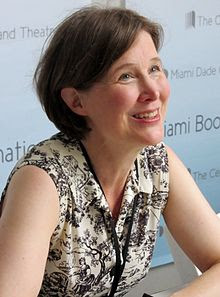Jutta taught Hildegard to read and write, but Hildegard did not feel she was well-versed in theology. Jutta was deeply renunciate, flagellating and starving herself, until she died in 1136. Other well-born maidens had joined them, and at Jutta’s death they looked to Hildegard as their new magistra. In a bid for freedom, Hildegard helped them dress in fine gowns with their hair unbound. The young women were freed from their walled-in rooms and began helping in the abbey gardens, in the scriptorium and the infirmary.
With the help of others, Hildegard began to transcribe her visions in a document entitled Scivias. It was copied and illuminated, coming to the attention of other priests and even the pope. When she was to be questioned about her work in 1147, she wrote to Bernard of Clairvaux, who defended her work to the pope. It was highly unusual that a woman should write anything and heresy was a dire offense. But Pope Eugenius favored Hildegard’s work, calling her “God’s Sibyl.” The Pope requested that Hildegard continue, finishing Scivias, its title meaning “Know the Way.”
Wanting more autonomy for herself and her nuns, Hildegard asked for and was given land at St. Rupertsberg to build her own abbey. When the abbot at Disibodenberg did not want to let them go, Hildegard fell ill and could not leave her bed. Finally, in 1150, they were allowed to leave. The new buildings did not exist, however, and Hildegard and about 20 nuns lived in privation there until they were built.
Hildegard was especially close to Volmar, a Benedictine monk she had known since childhood. He became provost at the new convent, plus Hildegard’s confessor and scribe. She was also especially close to Richardis von Stade, who helped copy and illuminate her writings. When Richardis was invited to become abbess of another convent, Hildegard was distraught. Richardis did move, but died a year later. Hildegard learned from this attachment, recovering to write the lyrics and music of a morality play, the Ordo Virtutum, which was performed at the time the new abbey at St. Rupertsberg was consecrated in 1152. Hildegard wrote that she was a “feather floating on the breath of God.” By this time Hildegard was 54, considered old for her time.
After finishing Scivias, Hildegard continued to write, documenting the herbal remedies used in her convent and what she knew of the causes and cures of disease. She wrote a great deal of liturgical music. She also documented further her visionary theology, which she felt came from “the Living Light.”
By 1155, Frederick I, known as Barbarossa for his red beard, became Holy Roman Emperor, King of Germany and Italy. He was finally able to counterbalance the power of the church. He did not bother Hildegard or her convent at St. Rupertsberg, however. Hildegard went on four preaching tours all over Europe and also wrote letters to many European leaders. The treasure trove of her writing illuminates much about medieval times for scholars. Hildegard also founded a convent at Eibingen in 1165. She died in 1179 at 81.
Hildegard’s importance has resulted in much study and published material, as well as documentary films about this “unruly mystic.” I recently read a fictionalized biography, “Illuminations: a Novel of Hildegard von Bingen” [published 2012] by Mary Sharratt. Though she doesn’t hesitate to see Hildegard through 21st century eyes, Sharratt imagines Hildegard’s feelings as though she were a gifted and courageous woman, operating on the authority of her visions. There is some value in this, as of course Hildegard was human. Though she must have felt very differently than we do, she created a new culture around her mostly through her own effort.
Recently the Scivias Institute has created a pilgrimage route in Germany to help tell Hildegard’s story, the Hildegard Way. It is 140 km along the Nahe River incorporating stops at the ruins of the Disibodenberg Abbey, a vaulted cellar at St. Rupertsberg and the abbey at Eibingen. All signage is in English and German.


